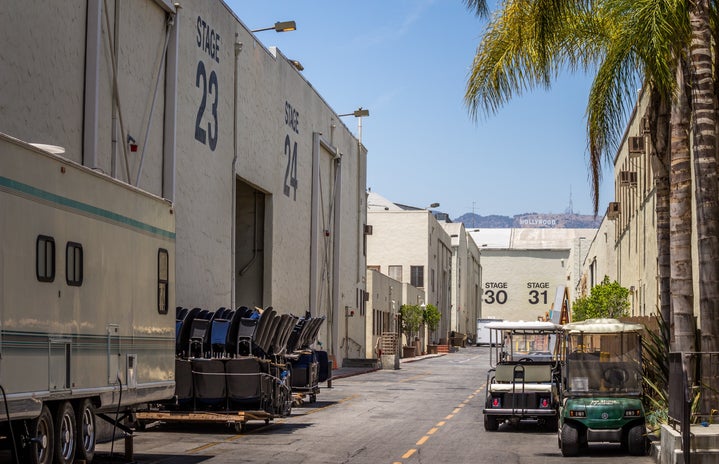During the advanced screening of John Krasinki’s newest horror thriller, A Quiet Place, it became clear that this is going to be a film that everyone is going to be talking about this season. The staff at the Askew Student Life Center instructed the audience to heed Krasinki’s advice from the film’s premiere at the South by Southwest festival to remain as quiet as possible while watching. This recommendation added an additional layer of fear and thrill to this already nerve-wracking film.
Courtesy: The Verge
A Quiet Place centers around the Abbot family, led by Lee (John Krasinski) and Evelyn (Emily Blunt) and their children, set in 2020. It begins on Day 89 of what appears to be a deserted town, left to ruin following an unknown happening. Only one thing is certain from the onset of the film: silence is necessary. The family goes out of their way to ensure that every movement made makes no noise, even going to far as to speak sign language; this in part as well to the fact that their daughter, Regan (Millicent Simmonds) is deaf.
All seems peaceful in their return from an abandoned store in town to return home when, within the first 10 minutes of the film, a major event takes place that reinforces the severity of the family’s situation and the need to be quiet. From here, the film jumps forward months and the family is seen in the wake of what took place, yet forces themselves to continue into the future. Through the display of headlines of magazine clippings, it becomes clear to the audience the source of the Abbot’s fear and need for silence. Their home has been made specially fitted to become a sound-proof space: marked patches for where the floor doesn’t creak, a sand trail that muffles the sound of footsteps, a papier-mâché bunker to allow for small conversations amid the silence. The life they have outfitted themselves for survival is complicated upon the nonchalant reveal that Evelyn is pregnant, and the audience quickly realizes the noise filled implications this situation has.
Courtesy: Uncrate
The film kicks into incredibly high-gear with non-stop twists that keep the characters and those watching on their toes and struggling to remain unheard. There is not a moment in the film where the audience was not on the edge of their seat and desperate to cry out but refrained as the rule for the silence of the film became a rule for the theater. There were points where the suspense is almost unbearable but too enrapturing to turn away from.
The actors did an incredible job in their roles, not only with the chemistry as a family (Krasinki and Blunt being real-life spouses) but the emotional range they displayed in a film that is 95 percent silent. The pain, joy, and love expressed by every member of the Abbot family were explicitly clear and moving yet occurred all through physical and facial gestures. The performances of the actors, particularly Blunt, are ones worthy of recognition come award season. The portrayal of her character’s pregnancy experience forced into silence was unbelievable and provided for unforgettable, emotionally tumultuous scenes.
It is worth noting, as well, that the Simmonds not only plays a deaf character but is deaf herself. In casting Regan, Krasinksi said that hiring a deaf actress to play the part was “non-negotiable.” This played an enormous part in the cast’s learning American Sign Language in order to communicated both on- and off-screen. Her presence added a dimensionality to the casts’ understanding of deafness and the honesty of that experience. It was important to see Krasinski understanding the responsibility he had as a director in giving the opportunity to allow those with impairments to give genuine looks into the reality of their lives and for the hearing-impaired to be beautifully and accurately represented. It will be interesting to note in the weeks following the film’s premiere what those in the deaf and hearing-impaired community have to say about the portrayal of deafness. It seems, though, that the film worked diligently to pay due diligence to the role of the on-screen portrayal of a deaf, young girl.
Krasinksi has said that he is not one for genres, but A Quiet Place is a horror thriller that is not without its influences. He has said that he has been inspired by films like Alien or Jaws, for example, which is more about those on the boat than the actual shark. This becomes clear about the Abbot family once the full scope of their situation is revealed. The film was reminiscent of Cormac McCarthy’s The Road and Octavia Butler’s “Speech Sounds” upon first watching, but even more literary parallels upon an inevitable rewatching. Despite its terrifying silences that brought distress to the slightest sound, what was most striking about the film was its highlighting of the importance and presence of sound. Those with the ability to hear take for granted all of the noises around us in every moment of every says and A Quiet Place is quick to remind the audience the power that sound has, even more so when it is absent.
A Quiet Place opened in theaters April 6.



